Abstract
Current statistical prescriptions for low-dosage extrapolation of carcinogenic risk make no distinction between exposure to initiators and exposure to promoters despite the abundant data that these two classes of carcinogens have different modes of action. One reason for this is the lack of an appropriate model. In this paper, a model for carcinogenesis is presented which provides a framework for understanding the roles of "spontaneous" events, hereditary factors, and environmental agents in human carcinogenesis and for interpreting experimental carcinogenesis. This model incorporates two features: transition of target stem cells into cancer cells via an intermediate stage in two irreversible steps and growth and differentiation of normal target and intermediate cells. Cast in mathematical terms, the model can be fitted to age-specific incidence data on human cancers of both children and adults and can illuminate the relative importance of agents that affect transition rates, tissue growth and tissue differentiation. Within the context of the model, initiators act by affecting the transition rates, whereas promoters influence the kinetics of growth, especially of initiated cells. The model provides a good quantitative description of the epidemiology of carcinomas of the breast and of the lung. The data are consistent with the notion that hormones and cigarette smoke act as promoting agents in carcinoma of the breast and of the lung, respectively.
Full text
PDF
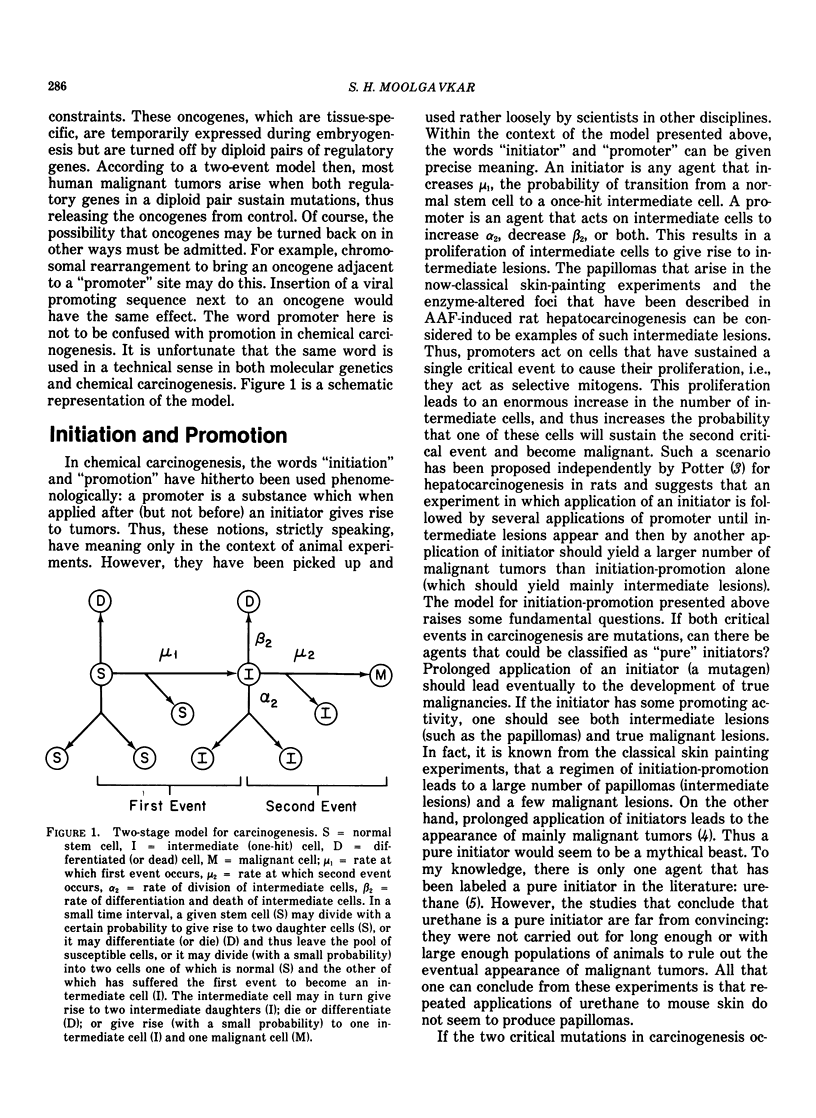
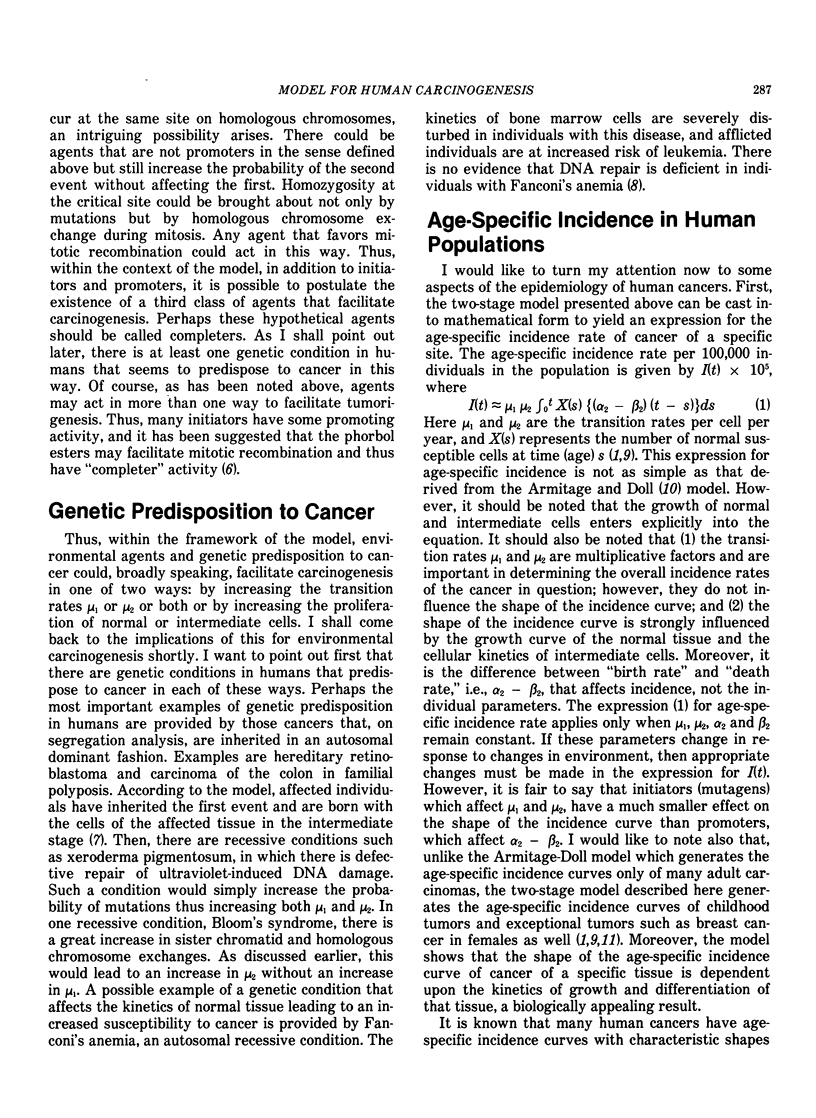
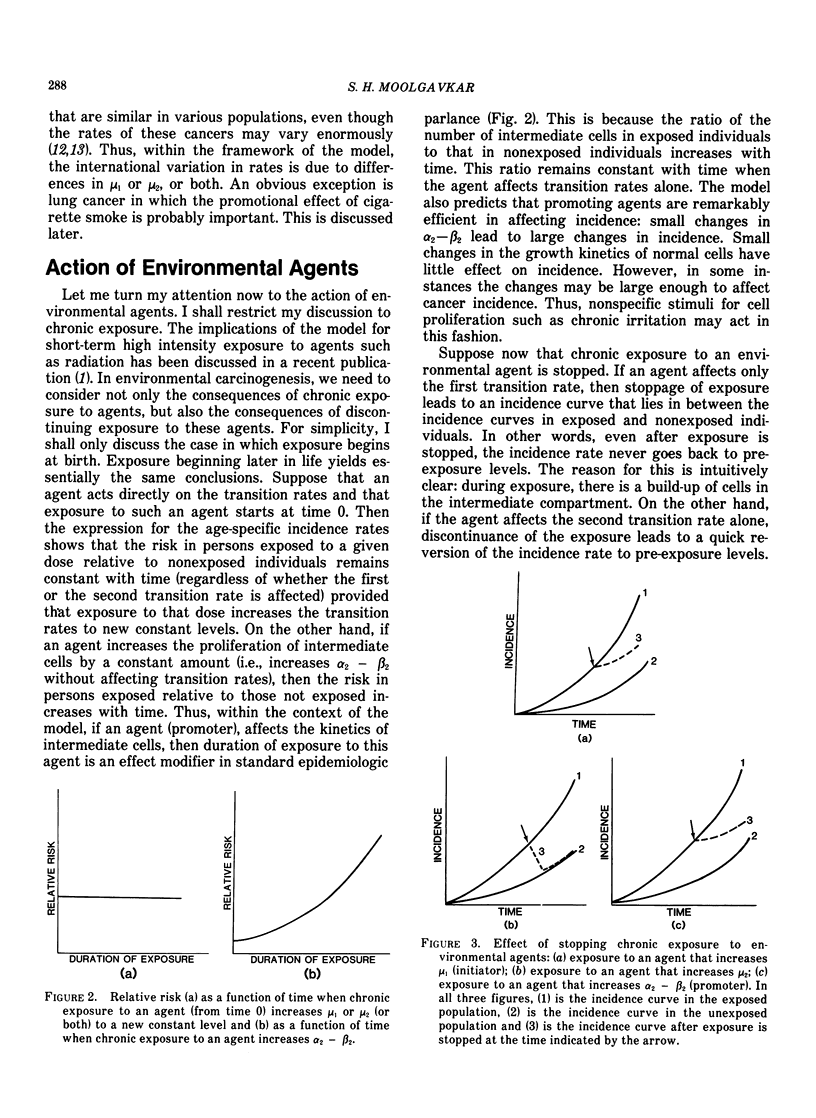
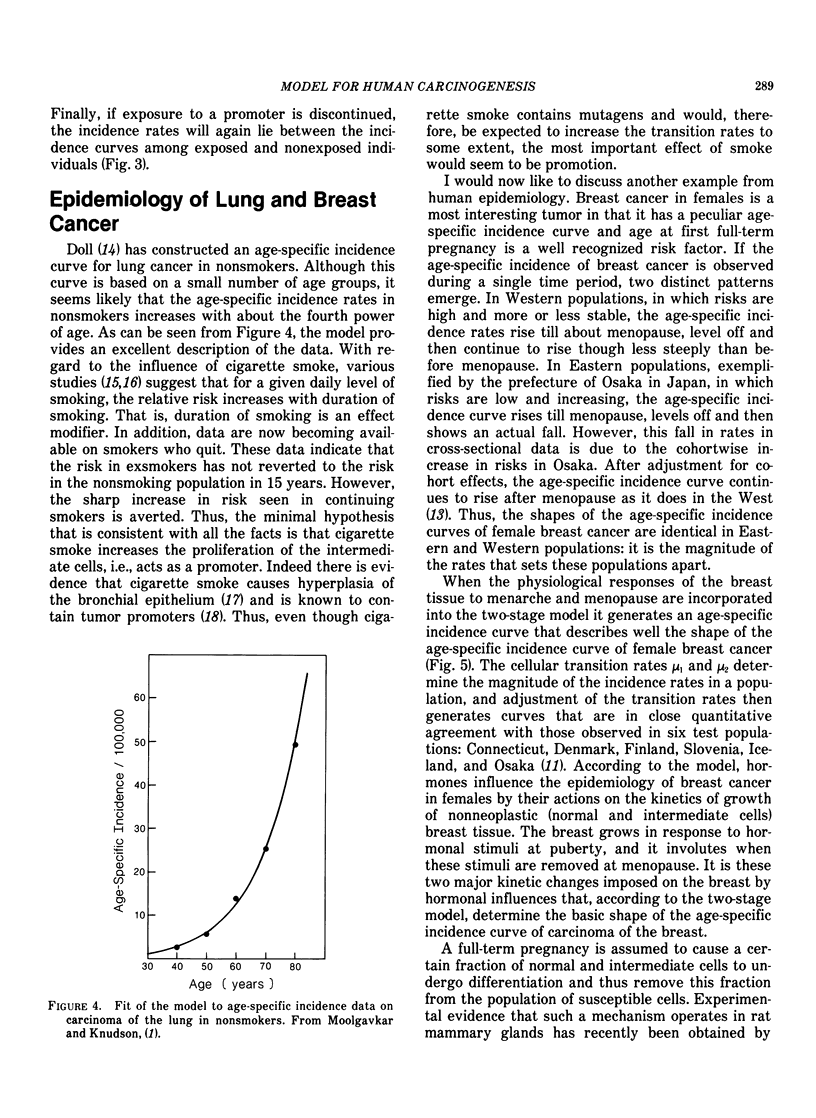
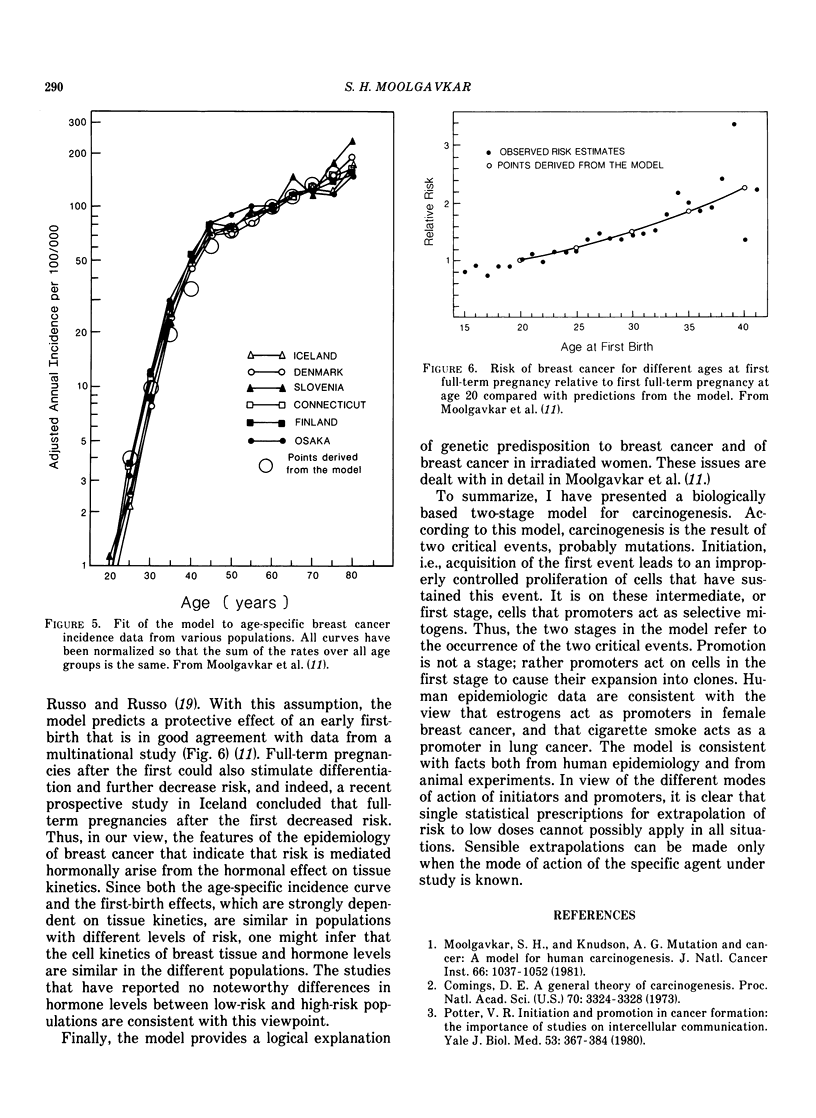
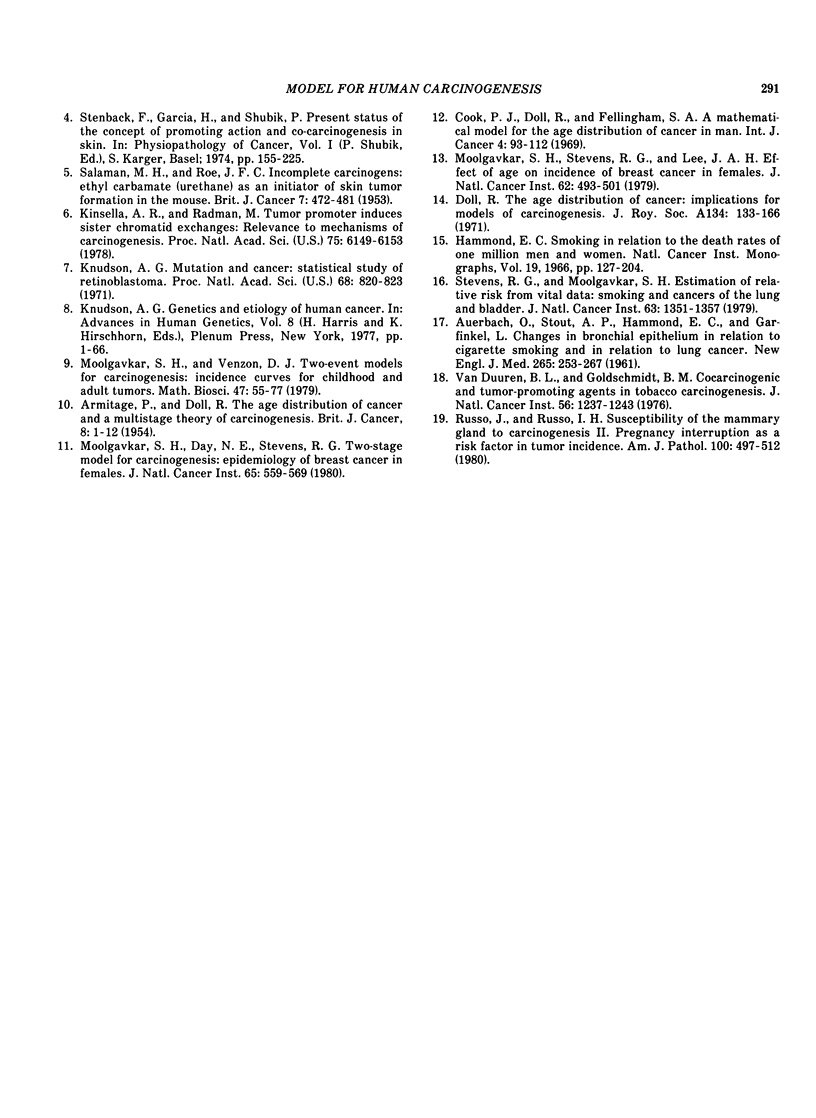
Selected References
These references are in PubMed. This may not be the complete list of references from this article.
- ARMITAGE P., DOLL R. The age distribution of cancer and a multi-stage theory of carcinogenesis. Br J Cancer. 1954 Mar;8(1):1–12. doi: 10.1038/bjc.1954.1. [DOI] [PMC free article] [PubMed] [Google Scholar]
- AUERBACH O., STOUT A. P., HAMMOND E. C., GARFINKEL L. Changes in bronchial epithelium in relation to cigarette smoking and in relation to lung cancer. N Engl J Med. 1961 Aug 10;265:253–267. doi: 10.1056/NEJM196108102650601. [DOI] [PubMed] [Google Scholar]
- Comings D. E. A general theory of carcinogenesis. Proc Natl Acad Sci U S A. 1973 Dec;70(12):3324–3328. doi: 10.1073/pnas.70.12.3324. [DOI] [PMC free article] [PubMed] [Google Scholar]
- Cook P. J., Doll R., Fellingham S. A. A mathematical model for the age distribution of cancer in man. Int J Cancer. 1969 Jan 15;4(1):93–112. doi: 10.1002/ijc.2910040113. [DOI] [PubMed] [Google Scholar]
- Hammond E. C. Smoking in relation to the death rates of one million men and women. Natl Cancer Inst Monogr. 1966 Jan;19:127–204. [PubMed] [Google Scholar]
- Kinsella A. R., Radman M. Tumor promoter induces sister chromatid exchanges: relevance to mechanisms of carcinogenesis. Proc Natl Acad Sci U S A. 1978 Dec;75(12):6149–6153. doi: 10.1073/pnas.75.12.6149. [DOI] [PMC free article] [PubMed] [Google Scholar]
- Knudson A. G., Jr Mutation and cancer: statistical study of retinoblastoma. Proc Natl Acad Sci U S A. 1971 Apr;68(4):820–823. doi: 10.1073/pnas.68.4.820. [DOI] [PMC free article] [PubMed] [Google Scholar]
- Moolgavkar S. H., Day N. E., Stevens R. G. Two-stage model for carcinogenesis: Epidemiology of breast cancer in females. J Natl Cancer Inst. 1980 Sep;65(3):559–569. [PubMed] [Google Scholar]
- Moolgavkar S. H., Knudson A. G., Jr Mutation and cancer: a model for human carcinogenesis. J Natl Cancer Inst. 1981 Jun;66(6):1037–1052. doi: 10.1093/jnci/66.6.1037. [DOI] [PubMed] [Google Scholar]
- Moolgavkar S. H., Stevens R. G., Lee J. A. Effect of age on incidence of breast cancer in females. J Natl Cancer Inst. 1979 Mar;62(3):493–501. doi: 10.1093/jnci/62.3.493. [DOI] [PubMed] [Google Scholar]
- Potter V. R. Initiation and promotion in cancer formation: the importance of studies on intercellular communication. Yale J Biol Med. 1980 Sep-Oct;53(5):367–384. [PMC free article] [PubMed] [Google Scholar]
- Russo J., Russo I. H. Susceptibility of the mammary gland to carcinogenesis. II. Pregnancy interruption as a risk factor in tumor incidence. Am J Pathol. 1980 Aug;100(2):497–512. [PMC free article] [PubMed] [Google Scholar]
- SALAMAN M. H., ROE F. J. Incomplete carcinogens: ethyl carbamate (urethane) as an initiator of skin tumour formation in the mouse. Br J Cancer. 1953 Dec;7(4):472–481. doi: 10.1038/bjc.1953.49. [DOI] [PMC free article] [PubMed] [Google Scholar]
- Stevens R. G., Moolgavkar S. H. Estimation of relative risk from vital data: smoking and cancers of the lung and bladder. J Natl Cancer Inst. 1979 Dec;63(6):1351–1357. [PubMed] [Google Scholar]
- Van Duuren B. L., Goldschmidt B. M. Cocarcinogenic and tumor-promoting agents in tobacco carcinogenesis. J Natl Cancer Inst. 1976 Jun;56(6):1237–1242. doi: 10.1093/jnci/56.6.1237. [DOI] [PubMed] [Google Scholar]


